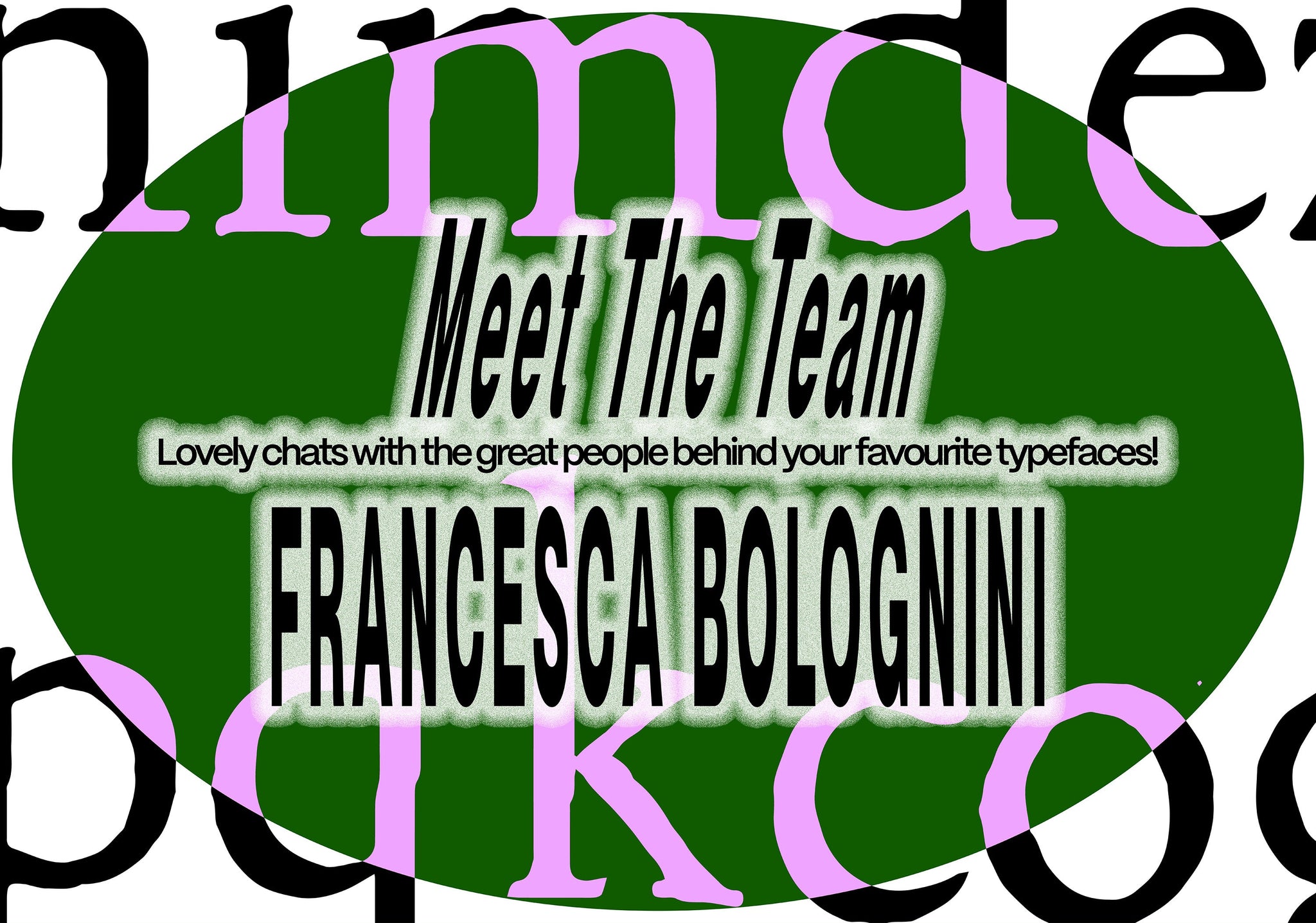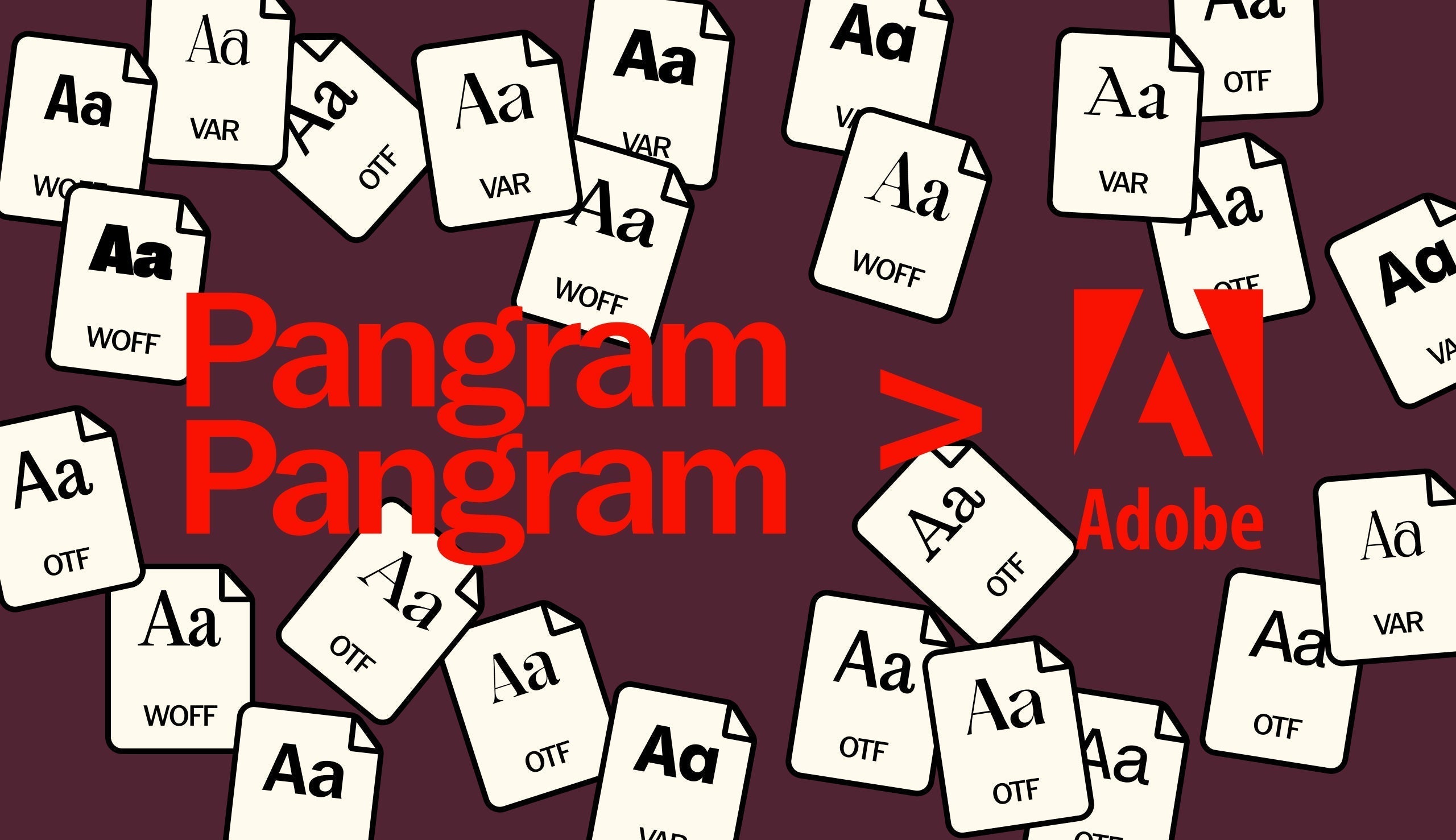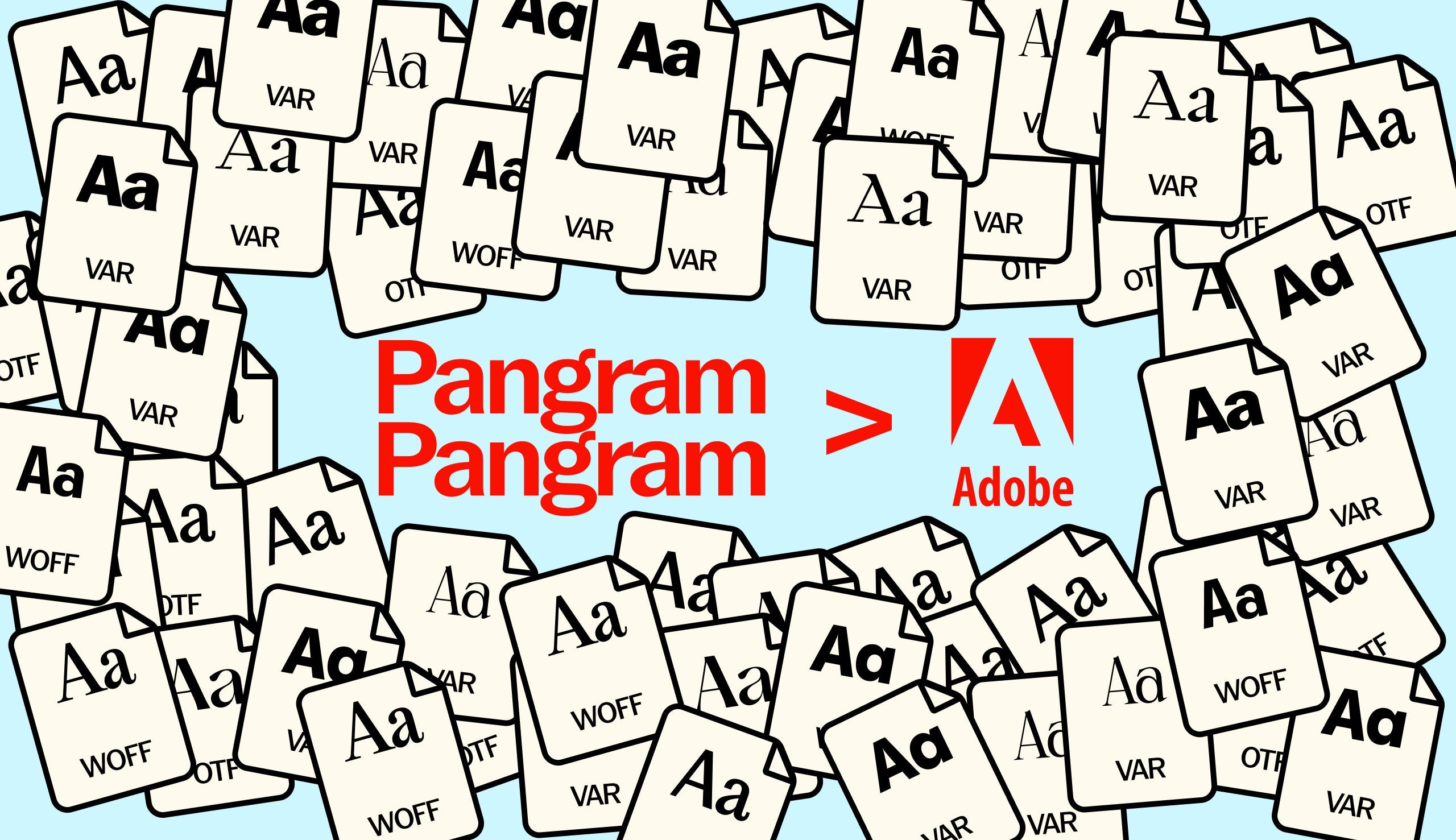In the innovative realm of type design, Francesca Bolognini stands as a master craftswoman, creating elegant letterforms that weave together her deep experience and inspiring journey. Hailing from Italy, Francesca brings a unique perspective to her craft, infusing every design with a passionate approach and a melting pot of cultural influences.
Francesca has etched her creative narrative on Pangram Pangram’s canvas with contributions to PP Editorial, PP Neue Montreal, Fragment, and Acma – having worked closely with Pangram Pangram’s founder, Mat, resulting in the evolution of fonts that seamlessly blend sans and serif. Francesca's masterful practice most recently culminated in the remarkable variable sans-and-serif, Fragment.
As part of the Meet The Team series, we’ve spoken to Francesca about her daily routine, the essential role of green tea, her journey into typography, and her mentors along the way – speaking volumes of her resilience and passion for the craft.
Sharing insights into her creative process and inspirations, Francesca highlights the significance of collaboration and the communal reflection that fuels her designs – from her love of quick sketching to the hours spent browsing digitised type specimens, her sources of inspiration are as diverse as her designs. So, without wasting any more time, let’s dive into the intricate world of Francesca Bolognini, where her artistry and love for type converge, creating timeless and captivating letterforms.
Introduce yourself! Who are you, and what do you do?
Hello there, I’m Francesca, a type designer with over a decade of experience. I’ve released a few retail fonts and worked on various custom fonts. As a mother of a lovely 6-year-old who's just learning to write, my job has become even more significant.
Even though I am proudly Italian, I’ve had the privilege of living in various countries and adapting to different cultures and languages, which has been a big part of my journey and has shaped who I am today.

What does a typical working day look like?
On an ideal working day, I drop my daughter off at school and settle at my desk with a cup of tea and calming music. I work continuously until it’s time to pick her up or do some yoga. Since creating quality work in type design requires many hours of focus, I stay on task. However, sometimes things go differently than planned, and my ideal routine gets disrupted or needs a twist!

What can’t you live/work without at your desk space (other than a phone or computer)?
Green tea, and my graphic pen.
How did you get started in type design, and what advice would you give to those wanting to get started?
I studied graphic design at Politecnico of Milan and, during my internship, worked with my professor Antonino Benincasa at his studio, helping him develop a font he had started. He gave me the FontLab manual, and I put my head around it.
For my final thesis, I decided to focus on type design history and did a research project about the origin of the italics. The research included going around Europe to interview significant figures in type design, including Gerrit Noordzij. I was fortunate enough to meet and talk to him. He’s a major influencer of today's type design.
Erik Spiekermann in Berlin also agreed to be my interviewee. Erik is an incredible source of inspiration in type. He was proud that I studied his book “Stop Selling Ships and Find Out How Type Works,” from cover to cover. He encouraged my interest and offered me an internship and, eventually, a job.
After a few years working at Spiekermann, I decided I wanted to be a full-time type designer, so I applied at KABK and graduated in ’08. This master's program helped launch my career.
My path to type design was shaped by my curiosity, the kindness of exceptional teachers and designers, and some fortunate events. If you have a passion for type and persist in pursuing your interests, there is a unique path for you. Your personal journey does not have to be like anyone else’s.

What typefaces have you designed for PP?
Mat and I collaborated on several design projects. I helped review some of his initial designs and worked together on PP Editorial New and PP Neue Montreal. I also created PP Editorial Italics, and we started to work together regularly.

While reviewing Hatton, I started thinking about creating a versatile font family that could span from sans to serif. As a result, Fragment was born, combining the best of both worlds with a retro touch.
Through a conversation with Mat, Acma was brought to life from our combined ideas, sketches, and inspirations.

At the moment, I am working on a semi-attached script font used for pangramplayground.com, which should be available soon.
I work on custom projects when there is a need. And because of my experience, I sometimes help others at Pangram to guide their work. Everyone needs an extra pair of eyes in type design, especially after working on a single project for a long time!

What’s your favourite PP that you didn’t design?
That would be Jubilee. Technically, it is not PP but Off-Type, but it’s broadly from the same family :) I love anything that Valerio designs.
Where does your creative inspiration or design philosophy come from?
The spark in my work often comes from collaborating with others and reflecting together. I find self-initiated projects important, but I enjoy them more when there is a specific need or communal reflection. In terms of inspiration it really depends on the project I work on. Often, inspiration comes from my own sketching, which these days is usually very quick. I can also spend countless hours browsing digitised type specimens from past centuries from Fonts In Use, which is an excellent resource.

What creative books are a must?
Monographs are great to collect. I am particularly fond of Brad de Does’ book with his astonishing sketches. I also recently preordered the new book on Herb Lubalin, which comes out in June.
What do you enjoy most about your job, and what is the biggest challenge?
I enjoy losing myself in drawing and achieving the famous state of flow, which is said to be the most fulfilling for humans. But then I found it hard to make specimens, realizing the type didn't come out exactly as I had planned. Letting it go and calling a project finished is also challenging for me. But as Erik Spiekermann printed: “Better done than Perfct.”
Finally, let's spread the type love! Quite simply, what’s your favourite typeface?
This is a tricky question since there is so much good work. I recently enjoyed admiring Michelangelo Nidra's Rapidissima, which conveys the sensation of speed through the italics form.
Editorial New, Acma and Fragment and more are available to try for free on Pangram Pangram
Commercial licenses are also available, starting at $40.








